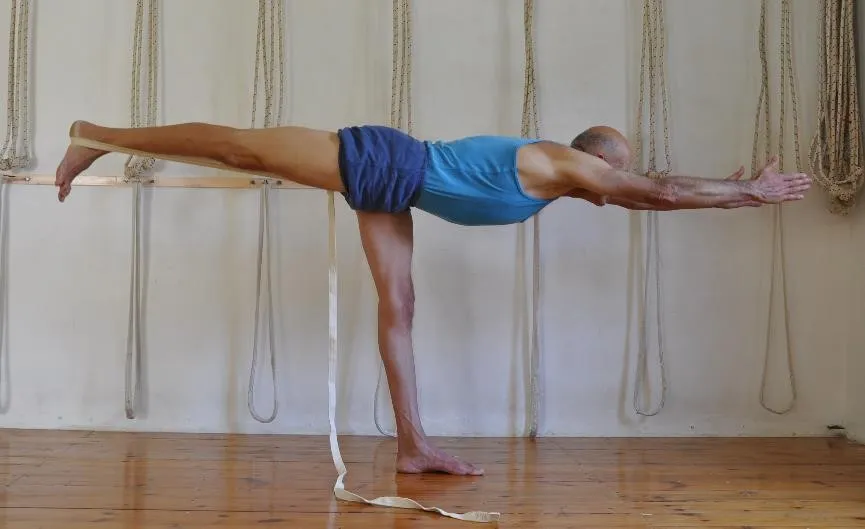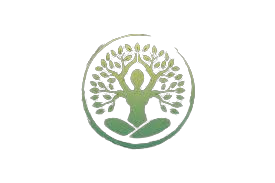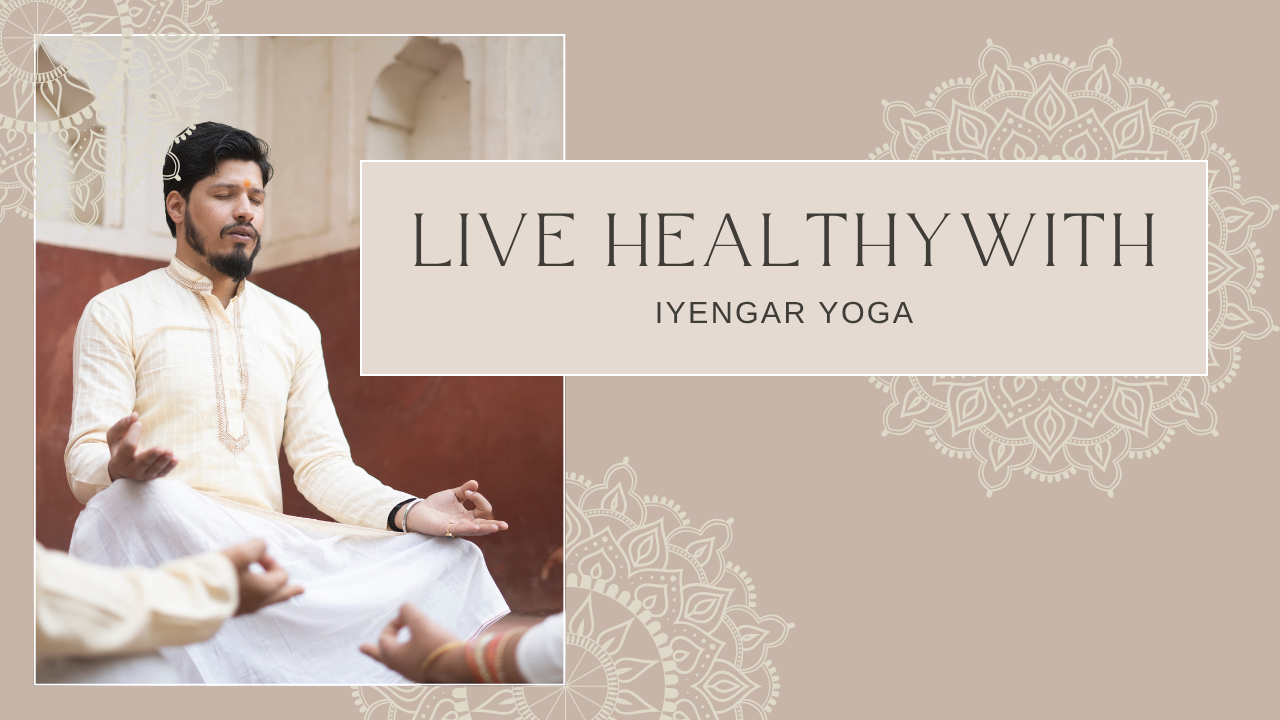Live healthy with Iyengar Yoga — a practice that promotes strength, flexibility, and mental balance through precision and discipline. In today’s fast-paced world, maintaining physical and mental health has become increasingly important. One of the most effective, time-tested methods for achieving holistic wellness is through Iyengar Yoga. Founded by B.K.S. Iyengar, this style of yoga emphasizes precision, alignment, and the use of props to ensure accessibility for all.

Table of Contents
What is Iyengar Yoga?
Iyengar Yoga is a form of Hatha Yoga that focuses on detailed alignment and control in each posture. Props such as belts, blocks, and ropes are commonly used to help practitioners maintain the correct position, regardless of their level of flexibility or experience.
Key Principles of Iyengar Yoga:
- Alignment: Precision in posture ensures maximum benefit and safety.
- Sequencing: Poses are arranged in logical sequences to achieve specific physical and mental goals.
- Timing: Holding poses for longer durations enhances stability and awareness.
- Use of Props: Helps practitioners perform poses correctly and stay longer in positions.
Physical Health Benefits
Practicing Iyengar Yoga regularly can significantly enhance your physical health. Here’s how:
1. Improves Posture
Through strict attention to alignment, Iyengar Yoga helps correct poor posture, reducing chronic pain in the back, neck, and shoulders.
2. Increases Flexibility
With the aid of props, even beginners can safely stretch and open up their bodies, gradually increasing flexibility.
3. Builds Strength
Many poses involve isometric contractions, building muscular strength and endurance over time.
4. Enhances Balance and Coordination
As you learn to control your body and hold postures, your balance and coordination improve substantially.
5. Aids Recovery and Rehabilitation
Iyengar Yoga is often used therapeutically to support recovery from injuries and manage chronic conditions like arthritis and scoliosis.
Mental and Emotional Benefits
1. Reduces Stress and Anxiety
The focus on breath and alignment promotes mindfulness, calming the nervous system and reducing anxiety.
2. Improves Concentration
Holding poses with awareness enhances mental focus and clarity.
3. Boosts Emotional Resilience
Practicing regularly builds inner strength, helping you manage emotional challenges with greater ease.
How to Start Practicing Iyengar Yoga
Find a Certified Iyengar Instructor
Look for teachers certified by the Iyengar Yoga National Association. Proper guidance ensures safety and effectiveness.
Start with Basic Poses
Begin with foundational poses like Tadasana (Mountain Pose), Adho Mukha Svanasana (Downward Dog), and Virabhadrasana (Warrior Pose).
Use Props Wisely
Props aren’t a sign of weakness—they are tools for precision and alignment.
Maintain Consistency
Like any discipline, regular practice brings the best results. Aim for at least 3 sessions a week.
Iyengar Yoga vs. Other Yoga Styles
| Feature | Iyengar Yoga | Vinyasa Yoga | Hatha Yoga |
|---|---|---|---|
| Focus | Alignment & Precision | Flow & Movement | Basic Poses & Breathing |
| Use of Props | Yes | Rarely | Sometimes |
| Ideal for | Beginners, Therapy | Intermediate to Advanced | Beginners |
| Pace | Slower | Faster | Moderate |
Common Poses in Iyengar Yoga
Tadasana (Mountain Pose)
Improves posture and body awareness.
Trikonasana (Triangle Pose)
Strengthens legs and stretches the spine.
Setu Bandhasana (Bridge Pose)
Opens the chest and strengthens the back.
Adho Mukha Svanasana (Downward Dog)
Elongates the spine and energizes the body.
Savasana (Corpse Pose)
Promotes complete relaxation and stress release.
FAQs about Iyengar Yoga
Q1. Can beginners practice Iyengar Yoga?
Yes, Iyengar Yoga is beginner-friendly due to its emphasis on props and clear instructions.
Q2. Is Iyengar Yoga suitable for older adults?
Absolutely. Its focus on alignment and support makes it ideal for seniors.
Q3. How is Iyengar Yoga different from regular yoga?
It emphasizes alignment, longer holds, and the use of props, making it both therapeutic and precise.
Q4. Do I need to be flexible to start?
No. Iyengar Yoga helps you become flexible gradually with safe techniques.
Q5. Can Iyengar Yoga help with chronic pain?
Yes, it is widely used as therapy for conditions like back pain, neck stiffness, and arthritis.
Final Thoughts: Why You Should Live Healthy with Iyengar Yoga
In a world full of distractions, the structured and mindful approach of Iyengar Yoga provides a powerful tool to restore balance, strength, and inner calm. Whether you’re a complete beginner, someone healing from an injury, or simply looking to deepen your wellness journey, Iyengar Yoga meets you where you are.
Live healthy with Iyengar Yoga not just by practicing poses, but by embracing its philosophy of discipline, awareness, and care. Your body will thank you, your mind will find clarity, and your life will transform from the inside out.
Start today—your healthier self awaits on the mat.

